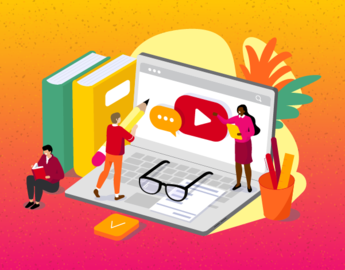Maintaining communication with students
How you communicate with students may also have to change over a changing semester. Consider for your course which communication channels are most appropriate and which are convenient to use for you and your students. A clear communication plan can help you consider how you will interact with students through the semester.
Problem: How do I ensure that students, wherever they may be, receive the right information at the right time?
Your communication plan should follow from your course outline and include when you need students to receive particular pieces of information and how they need to receive them. Consider things like announcements of material or assignments being available or reminders of events or due dates. For each message you need to send to your students consider how important it is that students see it immediately. Your communication plan should also include how you want to respond to communication from students and should include times where you are able to step away from your e-mail.
When thinking about your communication plan, you may want to consider:
-
An introductory message or video walking students through the shell for the course can help students understand the overall structure of the course. This is also a good time to share your communication plan with your students.
-
A weekly update message or video can help students feel connected to the course, you and their fellow students. It can also help them to see where to focus their work in your course for the week.
-
A discussion board for questions in the course can help streamline communications for every. Students can see already asked questions, and help each other by answering questions, either about the course structure or course material. You and your teaching team can monitor and help clarify students’ answers.
-
Ensure you leave yourself and your teaching team time away from answering e-mails (or tending to the discussion board)
-
Sometimes e-mails get missed or take extra time to respond to. Your communication plan should provide students with a procedure with a timeline and a process to get attention if you don’t respond to them within the timeline. This can reduce the overall number of e-mails students send and help sooth their anxieties.
-
Either in-person or online having the chance to talk with you and other students in real time can help strengthen student’s engagement with the course.
-
Have a way for students to schedule one-on-one time to meet with you. This can be in-person, but if any of your students aren’t able to attend in-person, ensure that they have the same access to meet with you that your in-person students do.
Problem: I have an important message that students need to see right away
From the class list/email tool under Communication in your D2L shell, you can send e-mail messages to the whole class, a group, a selection of students or a single student. This provides the surest way to communicate with a student because it puts the message in their personal e-mail inbox (for the account they have on record with the university).
Note: Class enrollments may fluctuate prior to the add/drop date at the beginning of each semester. The D2L class list updates overnight. If you would like to view real-time registration for your course, please access the Faculty Centre within the My UCalgary Portal.
See: Sending email to your students using the Classlist in D2L
Problem: I want to send an informational message to my students without overloading them
The course activity feed allows you to share regular update with students. These can be lower priority and more interactive. They can help you remind students where they should focus for the week and they can also provide a place for you to engage students on the course homepage. You can add to the course activity feed by posting announcements.
Students are also able to set up individual notifications in D2L and can opt to receive updates by e-mail or text message. Additionally, they can view these updates in the Brightspace Pulse App on their phones.
Problem: Students send me questions by e-mail, many of which are repeated, or are questions the whole class could benefit from seeing the answer to
Consider having a discussion topic set up for your students where you can encourage them to post their questions. These can be questions related to the course operations (“What format should my citations be in?”) or questions related to course material (“What does the author mean in paragraph 5?”). You can also encourage students to answer each other questions, provided that you and your teaching team regularly monitor the questions to verify their answers and fill in questions that aren’t answered. You can also create a locked discussion board with important questions.
In order to ensure students use the question discussion boards, make sure that you include them in your communication plan and discuss them with the students, so they understand the norms for behaving on the discussion boards. You will also need to firmly enforce your e-mail question answering policies to ensure that students ask the right questions in the right places.
See: Using Discussion Boards to Interact with Students
Discussion boards also provide a place to conduct formal learning activities, which can be accessed equally in and away from the classroom. Effective use of discussion boards begins with clear expectations of how students and your teaching team will use the space and requires regular instructor interaction to ensure that students feel as though their contributions are valued and that the norms are being enforced.
Problem: Students may not be able to attend synchronous lectures early in the semester and may not read or fully understand the course outline
Consider recording the first lecture where you present the course outline and components and posting the video in D2L Content. This will enable students who join the course later to watch the introduction to the course and learn what they missed. This way, you will not have to repeat the same information to new students individually.
Lesson checklist
-
Explore the available learning technologies to help determine how course components can be adapted
-
Identify which technologies you need to learn more about. Review available documentation and support resources (elearn.ucalgary.ca) and contact the Taylor Institute to arrange a consultation.
-
Determine how you will maintain communication and connections with students throughout a transition




